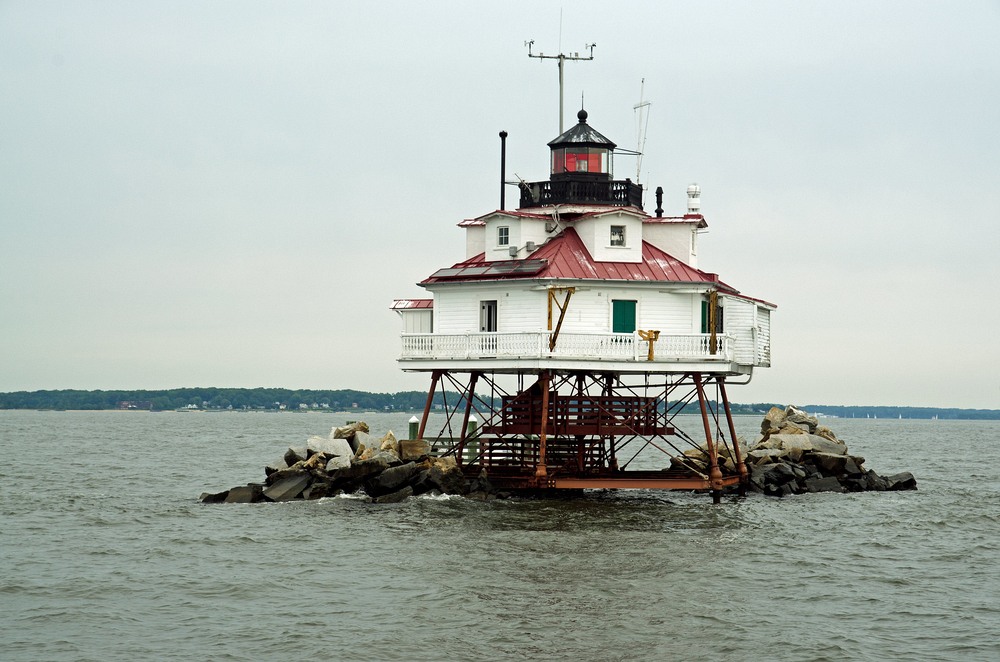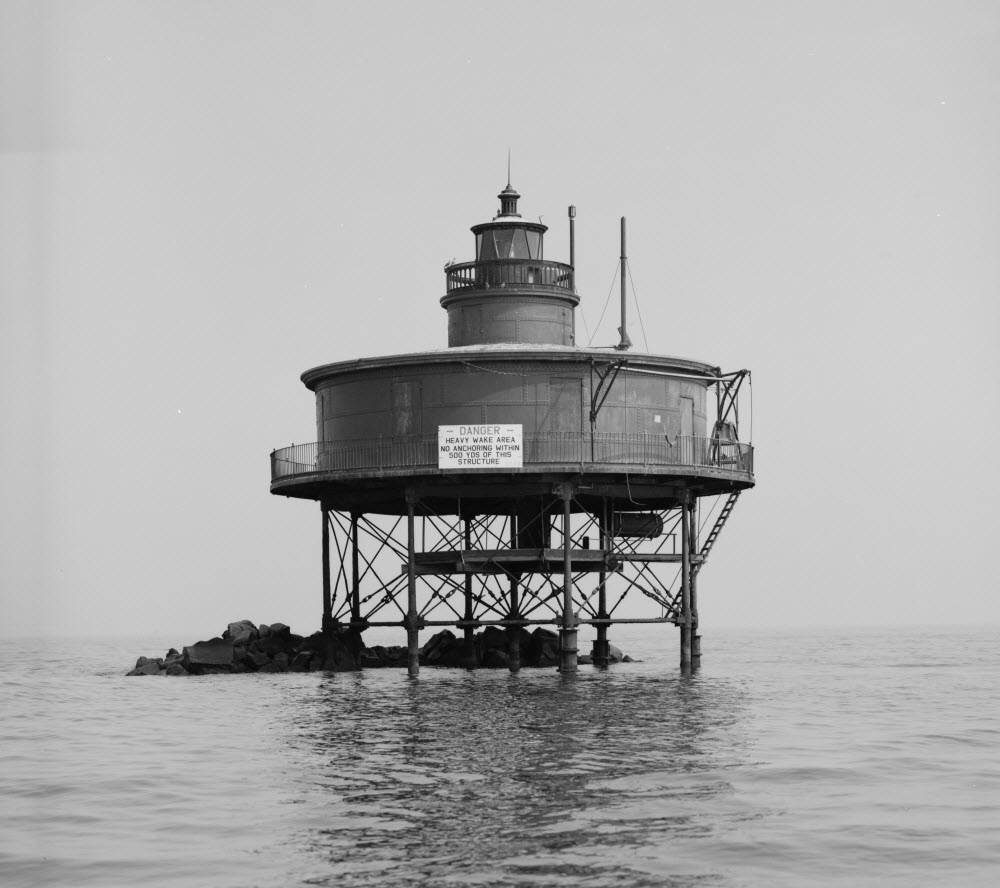Sandbanks are a hazard to marine traffic. Often found near coastlines, near the mouth of a river and around ports, these shallow, submerged beds of sand keep changing their shape and position posing great navigation risk to ships. Because the sand tends to drift with the tides, it is difficult to anchor a warning lightship on a sandbank, much less get a firm foundation for a permanent lighthouse.
The problem of erecting a lighthouse on sandbanks and shoals greatly disturbed Alexander Mitchell (1780 – 1868), an Irish brick-maker who ran a successful brick-making business near Belfast. Belfast has a strong seafaring tradition, and Mitchell had no doubt heard many tragic tales of lives lost at sea and ships grounded on the mudflats. Mitchell decided to do something about it despite having no formal training in engineering, or lighthouse building. Remarkably, Alexander Mitchell was also blind.

Thomas Point Shoal Lighthouse in the Chesapeake Bay, Maryland, United States, was erected in 1875 and still stands today. Photo credit: Mark/Flickr
Alexander Mitchell was born in 1780 in Dublin, the son of an Inspector-General of Army Barracks in Ireland, a duty that took him all over the country. At the age of seven, Alexander’s family moved to Pine Hill, near Belfast, where he got admission at the prestigious Belfast Academy. While learning arithmetic, geometry, and trigonometry at school, Alexander discovered his love for mathematics and he excelled at it.
Alexander’s eyesight had always been poor, but it became progressively worse as he became older. At age sixteen, he could no longer read. His family helped him in his studies as young Alexander’s world slowly spiraled into eternal darkness. At twenty-two, he went completely blind. By some accounts, Alexander’s loss of eyesight was due to a childhood infection of smallpox.

Despite his disability Mitchell was an outgoing and optimistic man. He married a neighbour’s daughter, against the wishes of his mother, and together they had five children. He also set up a successful brick manufacturing business in the Ballymacarrett area of Belfast that enabled him to buy many property around the city.
Mitchell had an active social life and entertained many guests at his home, including Thomas Romney Robinson, the astronomer, and George Boole, the famous mathematician. He acted so naturally in the presence of others that some people didn’t even know he was blind. He played whist and backgammon with them while an accomplice whispered the throw of the dice or the names of the cards.
Alexander Mitchell ran his brick-making business for 30 years, during which time he made many important contribution to the trade in the shape of several innovative developments to the process. In 1832, he retired from brick-making, and the following year, at the age of 52, patented the screw pile.
Mitchell's solution was simple—instead of hammering iron piles straight into the soft mud or clay to make a foundation, they were to be screwed in place. Each pile was to have propeller-like blades attached on one end that would allow them to be twisted into place like a giant corkscrew.

To test his invention, Mitchell secretly rowed out to a sandbank in Belfast Lough with his son John, then aged nineteen, and screwed down a screw pile, leaving the top end showing above water. Early next morning, he returned to find it still firmly fixed in position. After a second successful trial of his invention, he went to London and had the screw pile patented.
Mitchell had to wait another five years before he could convince Trinity House, the body then responsible for British and Irish lighthouses, the merits of his invention, and in 1838, the first screw-pile lighthouse was erected at Maplin Sands in the Thames estuary. This was quickly followed by another lighthouse at Morecambe Bay in 1839. By the turn of the next century, hundreds of screw-pile lighthouses went up all over the British Isles and in North America. Mitchell personally supervised the construction of several, travelling to the site where they were being erected. He would be seen climbing ladders and scaffolding on half-built lighthouse, oblivious to the dangers. At times, he would fall into the sea, but come up again cool and collected.

The success of the screw pile allowed Mitchell to expand his contracting activities to other areas such as the building of piers and bridges as far away as India.
Today screw-piles are still widely used for a variety of building applications from lighthouses to rail, telecommunications, roads, and numerous other industries where fast installation is required. Most industries use screw pile foundations due to the cost efficiencies and reduced environmental impact. Screwing the foundations in the ground means that there is less soil displacement so excess soil does not need to be transported from the site, saving on transportation costs and reducing the carbon footprint of the project.
Alexander Mitchell was elected member of the Institution of Civil Engineers in 1848, and received the Telford Medal the following year for a paper on his invention. He died at the age of 88 at his home near Belfast in 1868.

Model of the Maplin lighthouse at London’s Science Museum.

Seven Foot Knoll Lighthouse in the Chesapeake Bay, Maryland, was another screw pile lighthouse. The lighthouse was decommissioned in 1997 and transferred to the Baltimore Maritime Museum where it stands today.

Middle Bay Lighthouse is screw-pile lighthouse. The structure is located offshore from Mobile, Alabama, in the center of Mobile Bay. Photo credit: Harley Flowers/Flickr



Comments
Post a Comment